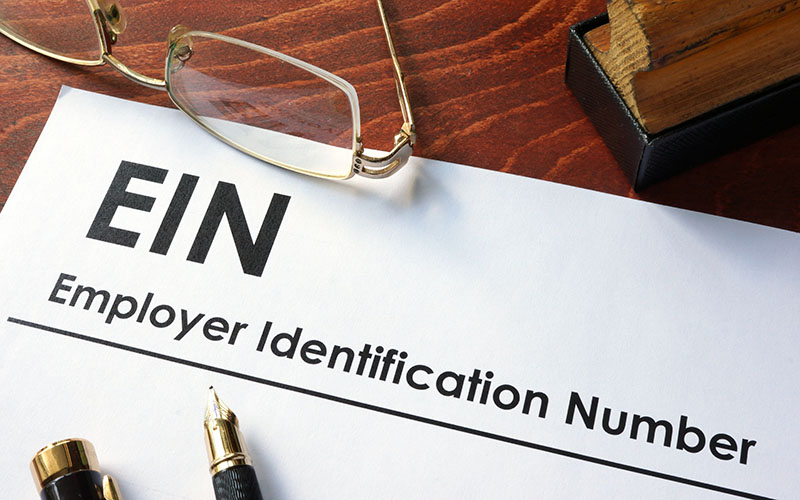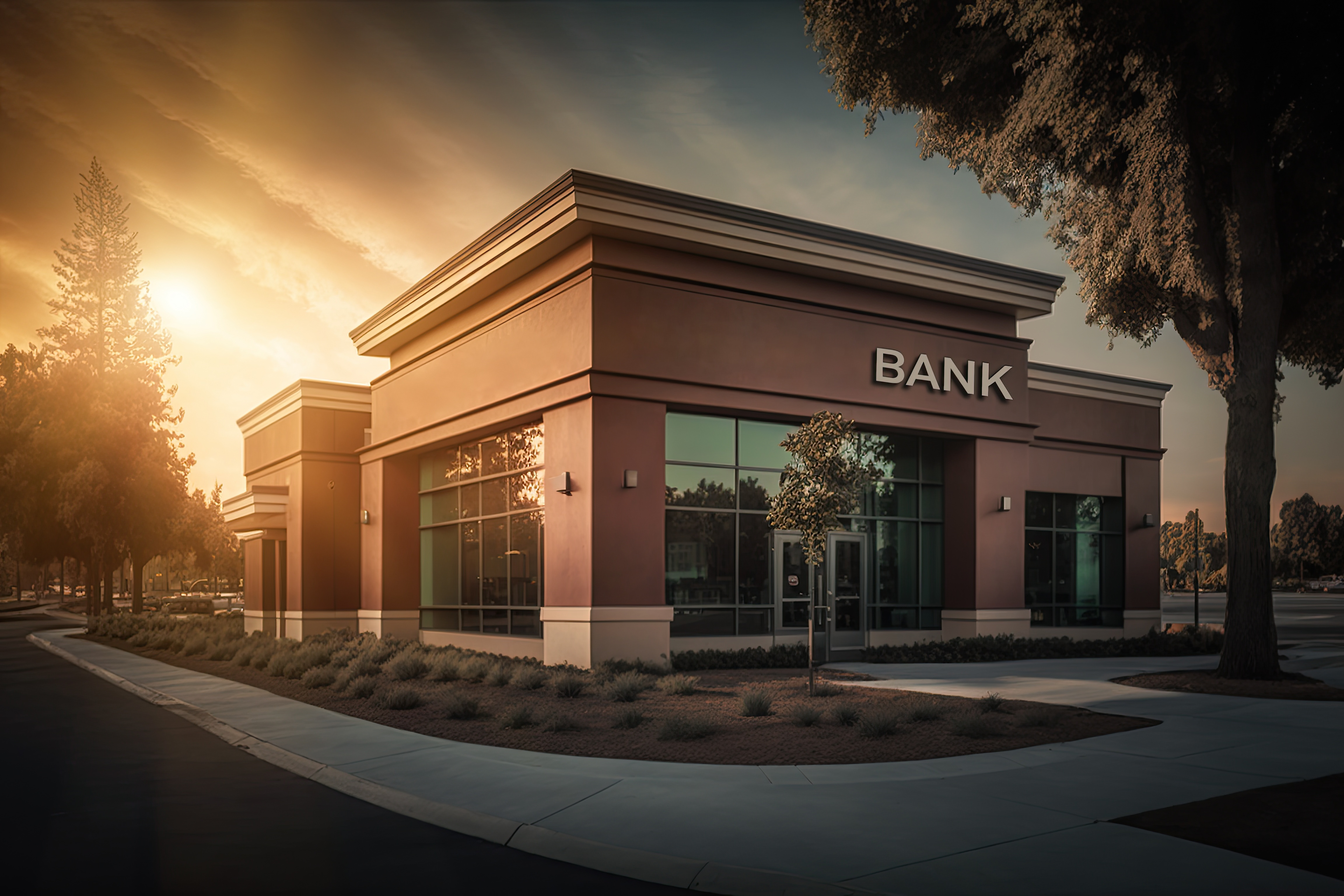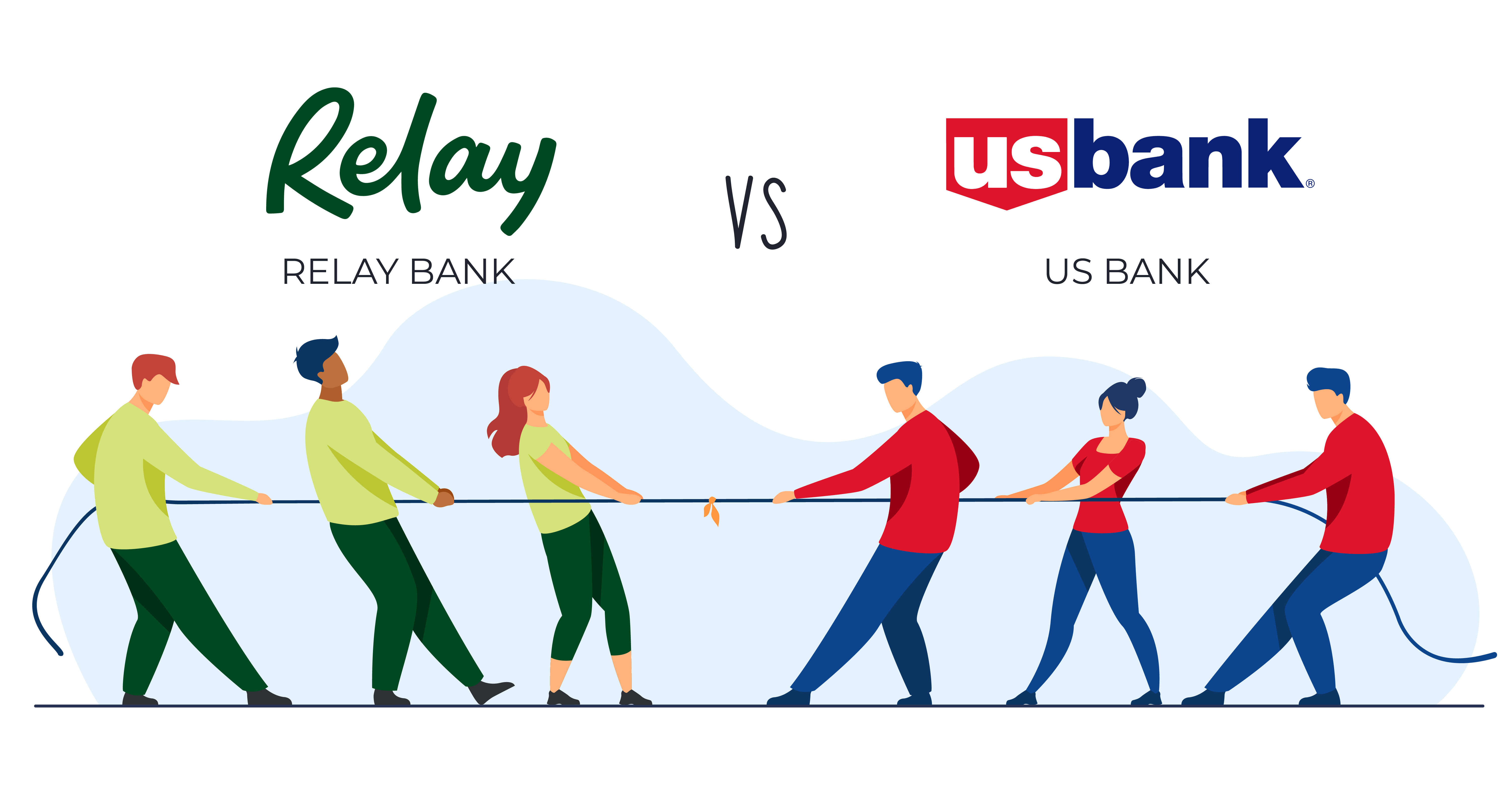Bluevine vs Relay Bank: Which is Better?
Key Takeaways
- Choosing the right bank for your business is crucial, and this comprehensive comparison between Bluevine and Relay simplifies the decision-making process
- Bluevine offers a 2% APY up to $100,000, no minimum balance requirements, and streamlined banking operations, while Relay provides 20 free business checking accounts, up to 50 debit cards, and integrates with accounting software
- Bluevine excels in high-yield interest rates and cash deposits, while Relay shines in offering multiple checking accounts and affordable wire transfer fees
- Both banks are FDIC-insured and offer mobile applications, debit cards, and reliable customer support

Confused about what bank to choose for your business? No worries, you’re at the right place!
The bank you choose for your business can severely impact both your daily operations and also your long-term business goals. So, it’s a no-brainer that when it comes to picking the right bank, you can leave no stone unturned.
But how do you pick the perfect banking services for your business? Since there are so many things that you need to consider, especially when it comes to both Bluevine and Relay, we made a comprehensive comparison guide so you don’t have to waste time scouring the Internet for hours just to find bits and pieces of information. Read on to find out all about which bank is the best fit for you!

Bluevine vs Relay
Bluevine and Relay are two of the most popular banking options when it comes to your business. Listed below is a quick overview of both banks and what you can expect from them.
Bluevine
To start, Bluevine is an online banking platform that offers business checking accounts. One of the best things about Bluevine is that eligible customers can get up to 4.25% APY (2.00% APY for all customers) up to $100,000. Moreover, Bluevine is great for businesses since there are no minimum balance requirements, and no monthly and overdraft fees. The platform also aims at streamlining your business’s banking operations by keeping all your bills in one place. This means that you can schedule recurring payments and free up cash easily when paying with credit.
It is important to keep in mind that Bluevine does have its own credit card along with a line of credit that can be accepted for some businesses via an application form.
However, there are a few pros and cons you should consider before opening a bank account with Bluevine. One of the biggest advantages of the platform is the high interest rates they offer on accounts. On the other hand, they can charge hefty wire fees, cash deposit fees, and out-of-network fees. Additionally, you can only open one checking account and five virtual sub-accounts; while this will help in setting aside cash flow, you cannot automate transfers from these virtual sub-accounts.
Relay
Relay Banks, similar to Bluevine, is also a digital banking platform that helps your business know exactly hoa their cash is being spent, saved, and stored. There are a lot of amazing features offered by Relay for your business such as 20 business checking accounts free of cost, customers can have up to 50 physical and virtual debit cards, they can also directly integrate Relay into their existing accounting software, and so much more.
On top of that, Relay allows customers to open business bank accounts with no minimum opening deposits, no overdraft fees, and no monthly charges. Relay also provides an option to upgrade known as RelayPro. RelayPro lets customers manage payables right from their banking accounts, same-day ACH payments, and free wire transfers both domestically and internationally.
Bluevine vs Relay
| Features | Bluevine | Relay |
|---|---|---|
| Required Opening Deposit | None | None |
| Required Minimum Balance | Customers have to spend $500 a month to qualify for APY | None |
| ACH Fees | None | None |
| Monthly Fees | None | None |
| Types of Businesses | Businesses seeking large interest rates on cash | Businesses with 2-100 employees |
| APY | Up to 4.25% APY on balances up to $250,000 for customers that meet monthly eligibility requirements | None |
| Domestic Wire Transfer Fees | Outgoing: $15, Incoming: $0 | Outgoing: $5, Free with RelayPro |
| International Wire Transfer Fees | Incoming: $0, Outgoing: $15 | Incoming: $0, Outgoing: $10, Free with Relay Pro |
| Debit Card | Free debit card is delivered within 10 working days after the application is approved | Customers can get up to 50 MasterCard debit cards |
| Physical Checks | Two free checkbook orders per year | Customers get unlimited free physical checks |
| Overdraft Fees | None | None |
| Mobile Banking | Available | Available |
| Credit Card | Available | Not Available |
| Xero and Gusto | Integration Not Available | Integration Available |
Bluevine Bank Features
Now that we have a quick overview of what you can expect from both of these platforms, let’s go into a bit more detail about the type of features they offer.
If you’re a business looking for high-yield interest rates then Bluevine is the way to go. You get can up to 2% interest on $100,000 with Bluevine, a feature that is not yet available on Relay. Another great feature that Bluevine offers is the business credit line. It offers up to $250,000 in business lines of credit while its counterpart, Relay, does not have the same feature. Additionally, if you are looking to make cash deposits, you should pick Bluevine as you can make cash deposits at any Green Dot retail location by paying a small fee of $4.95 per transaction.
Bluevine Bank Pros and Cons
| Pros | Cons |
|---|---|
| High interest rate | Fees for wire transfers and cash deposits |
| 2 free checkbooks | No physical branches |
| No account minimums or monthly fees | Limited account customization |
Relay Bank Features
If you need multiple checking accounts and debit cards, Relay is your best bet. With Bluevine, users can only open up to five sub-accounts. On the other hand, Relay lets you open up to 20 checking accounts under the same name. This feature is great because it helps customers in separating checking balances into various financial goals and even expense categories. You can also get up to 50 debit cards with Relay and can individually control the spending for each holder.
Besides this, if you are looking to receive money or make payments through wire transfers, Relay is a great option. While both platforms have small fees for outgoing transactions, Relay is the cheaper option when it comes to this. Relay only charges $5 for outgoing domestic wire transfers and $10 for international outgoing wire transfers, unlike its counterpart which has a fee of $10 for domestic and a $15 fee for international outgoing wire transfers. However, Relay takes the cake on this one with RelayPro as all wire transfers are free for RelayPro members which have a nominal fee of $30 a month.
Relay Bank Pros and Cons
| Pros | Cons |
|---|---|
| Up to 20 checking accounts | No paper checks |
| Up to 50 debit cards | Does not offer interest on balances |
| No minimum deposits or monthly fees | Limited physical cash handling options |
| Earn interest with automated savings |
Bluevine Bank vs Relay Bank: Which is Better?

While both Relay and Bluevine offer some impressive bank features, their customer base is different. On one hand, Bluevine caters to businesses that are looking for a high-yield interest rate on sums of cash while on the other Relay is more appropriate for small businesses looking for an affordable but reliable banking partner.
Both platforms are pretty standard and do not have traditional brick-and-mortar physical banking locations and are strictly digital platforms. They do not charge a monthly fee or any fees for your day-to-day transactions.
The difference between these platforms starts with their wire transfer feature. While Relay charges only $5 for domestic transfers and $10 for international transfers, both outgoing, Bluevine takes $10 for domestic outgoing wire transfers and $15 for international. Now, it may not mean much to individual customers, but if you are a business that makes regular wire transfers, you would want to take this into consideration as opting for Relay here will save you a lot in the long run. Moreover, Relay offers a premium option known as RelayPro for $30 a month. With RelayPro, you get access to a lot of premium banking features such as no fees for any wire transfers, same-day ACH, and batch bill payments.
What’s more, you can make cash deposits with Bluevine at any Green Dot retail location at a fee of $4.95 per transaction. Relay is strictly a digital platform and does not allow any kind of cash deposits.
When it comes to business integration, both banking platforms have some significant differences. While Bluevine allows its customers to integrate PayPal, Stripe, and Expensify for business payments, Relay allows Gusto, WISE, and Expensify. Now, this purely comes down to the kind of payment platform your business uses. If you use Expensify, you are in luck since it is supported by both platforms.
Another factor to consider while making your decision as to what digital banking platform you should pick, you need to look at how many accounts you can open under one account name. Relay is way ahead of Bluevine when it comes to this feature because you can open up to 20 checking accounts under the same accounting name. With Bluevine, you can only have five sub-accounts. However, these sub-accounts make it easier for businesses to categorize spending and savings like payroll, taxes, and profit.
When it comes to ATMs, Relay is again the more affordable option since it charges no out-of-network fee. On the contrary, Bluevine charges an out-of-network fee on top of the ATM fees making it the more expensive option. With Relay, customers only have to pay the ATM surcharge.
Now, when it comes to user reviews, there are pros and cons to both platforms and you should consider them both before you invest in either. Bluevine generally enjoys a good reputation among customers because of its easy application process and good customer service. However, Bluevine is known to sometimes close accounts without explanation and you can also only make $50,000 in mobile deposits per month. Bluevine’s alternative, Relay, also has a high customer satisfaction rate because of its great customer service and flexibility to make multiple bank accounts but some users claim that Relay’s application process can be a little intrusive to some and they also have slow check-clearing times.
Trustpilot has rated Bluevine with a 4.4/5 and Relay with only a point less - 4.3/5.
Bluevine vs Relay: Fees
- Currently, Bluevine has no opening deposit, monthly, or maintenance fees.
- Similar to Bluevine, Relay Bank also does not charge an opening deposit fee, monthly fee, or overdraft fee. However, if you choose to upgrade to RelayPro which is the premium version with additional features, you will have to pay a monthly maintenance fee of $30.
Bluevine vs Relay: Availability by Region
-
Bluevine is operational in all 50 states in the US and the District of Columbia.
-
Relay is pretty flexible when it comes to making and receiving payments, allowing both domestic transfers from all 50 states and International transfers to and from all countries except
- Belarus
- Cuba
- Iran
- Libya
- Myanmar*
- North Korea
- Russia
- South Sudan
- Sudan
- Syria
- Ukraine
- Venezuela
Bluevine vs Relay: Security
- When it comes to security, Bluevine is protected under the FDIC Insurance. This means that when you deposit money into an FDIC insured account, you can receive up to $250,000 per depositor in case of bank failure.
- In the same way, Relay is FDIC-insured as well and customers are eligible to receive up to $250,000 in case of bank failure. In addition to this, your cards are also protected under the Mastercard's Zero Liability Protection Policy. This policy protects debit cards from fraud.
Bluevine vs Relay: Mobile Application
- Bluevine has a mobile application that allows customers to make deposits and withdraw funds at no extra costs.
- Relay also lets users make free check deposits and payments through their mobile application.
Bluevine vs Relay: Do They Offer Debit Cards?
- Yes, customers can easily place an order for a debit card on Bluevine via their dashboard. The card is typically delivered within 10 working days. You can also get free ATM withdrawals at 37,000 Moneypass ATMs. Bluevine charges an out-of-network fee of $2.50 per transaction.
- With Relay, customers can get up to 50 debit cards and assign them however they like between their team and individuals. You also have full control over the cards and can use 55,000 Allpoints ATMs to withdraw cash without any fees.
Bluevine vs Relay: Do They Offer Credit Cards?
- Bluevine offers credit cards to customers that can be used anywhere and lines or credits are also available for businesses.
- At the moment, Relay does not offer any credit cards.
Bluevine vs Relay: Customer Service
Both Bluevine and Relay banks have been shown to have reliable and easy-to-reach customer support. Bluevine has a dedicated team of customer service agents that help customers live if they run into any issues. Relay has 24/7 email support available for customers along with live phone chat that is available Monday to Friday during business hours, Eastern time.
Which One Should You Choose?
When it comes to picking a bank, it depends on what your business needs. If you are looking for high interest rates, Bluevine is the better option for you. However, if you are looking to get more flexibility in terms of payments and do a lot of wire transfers, Relay is the best option for you.
Why Choose Bluevine?
- You want to earn interest on checking balances: With Bluevine, eligible accounts have the opportunity to earn up to a 4.25% interest rate on balances up to $250,000, whereas Relay does not provide checking accounts that earn interest.
- You need a line of credit: Bluevine stands out as our top choice for business lines of credit, offering flexible credit lines of up to $250,000 with competitive rates and quick funding. In contrast, Relay does not provide any lending products.
- You want free checkbooks: Bluevine offers two complimentary checkbooks annually, with each extra checkbook incurring a charge of $18.22, along with applicable taxes and shipping fees. Relay, on the other hand, does not provide checkbooks with its accounts, but it does offer free mailing of bill paychecks within the United States.
Why Choose Relay?
- You need multiple checking accounts and debit cards: When comparing Relay to Bluevine business checking accounts, it's important to note that Bluevine allows users to establish a maximum of five subaccounts. In contrast, Relay empowers users to generate up to 20 checking accounts using a single account name. This functionality enables them to segregate checking balances according to distinct financial objectives or expense categories, including payroll, taxes, profit, and more. Relay also offers the flexibility of issuing up to 50 debit cards and grants control over spending permissions for each cardholder.
- You rely on wire transfers: Bluevine and Relay both offer budget-friendly wire transfer rates. Neither imposes fees on incoming wire transfers. However, Relay provides a cost advantage for outgoing wire transfers. Relay charges $5 for outgoing domestic wire transfers and $10 for outgoing international wire transfers, whereas Bluevine's fees are slightly higher at $15 for outgoing domestic wire transfers. Moreover, Relay's premium account, known as Relay Pro, offers the added benefit of free wire transfers for its members.
Bluevine vs Relay User Reviews
| Bluevine | Relay | |
|---|---|---|
| Trustpilot Rating | 4.2 (based on 7,400-plus reviews) | 4.6 (based on 1,100-plus reviews) |
| Users Like | Easy application process, Good customer service | Ability to make multiple accounts, Good customer service |
| Users Dislike | Transfers take long, Closes accounts without explanation | Slow check-clearing times, Locked out accounts |
Both Bluevine and Relay are highly praised for their responsive customer service. Bluevine boasts a Trustpilot rating of 4.2 out of 5 stars based on approximately 7,400 reviews. In contrast, Relay enjoys an impressive 4.6 rating on Trustpilot with around 1,000 reviews.
Bluevine users often commend the straightforward application process for its checking account and line of credit. However, some have reported delays in payment processing and checks being placed on hold for five days or longer. Additionally, a few users have expressed frustration over account closures without receiving explanations.
On the other hand, Relay users have found value in the various account options it offers, simplifying cash flow management. Nevertheless, a small number of customers have shared experiences of their accounts being temporarily locked for review, which temporarily disrupted their business transactions.
Bluevine’s Evolution and Design Impact
Over the years, Bluevine has evolved from a simple business checking provider to a comprehensive banking service, adding features like lines of credit and mobile deposits. Their platform’s design focuses on simplicity and efficiency, which resonates well with businesses that appreciate straightforward banking solutions. However, some users have noted that the lack of physical branches and the limitations on account types can be restrictive.
Relay’s Innovative Approach
Relay’s design philosophy emphasizes flexibility and integration. Its ability to offer up to 20 different accounts under one business has been revolutionary for cash flow management, allowing businesses to allocate funds across various budgets and projects seamlessly. The user interface is highly praised for its intuitiveness, which makes managing multiple cards and accounts less daunting.
Bottom Line
To sum it all up, both of these digital banking platforms are reliable and enjoy a good reputation. While they both have pros and cons, it all comes down to your business needs and also your area of operation. So, do your research and weigh your options before you pick one.
What are the key differences between BlueVine and Relay Bank?
BlueVine offers high-yield interest rates, business lines of credit, and cash deposits, while Relay provides multiple checking accounts, up to 50 debit cards, and cost-effective wire transfers.
Which bank is better for businesses seeking high-interest rates on deposits?
BlueVine is the preferred choice, offering a 2% APY on balances up to $100,000.
Does Relay Bank allow businesses to make wire transfers?
Yes, Relay Bank offers wire transfers with reasonable fees, including same-day ACH payments and international transfers. RelayPro members enjoy free wire transfers.
Are there any monthly fees for using BlueVine or Relay Bank?
Both BlueVine and Relay Bank do not charge monthly fees for their basic services. However, RelayPro, a premium option, has a $30 monthly maintenance fee.
Can I open multiple checking accounts with these banks?
Relay Bank stands out in this aspect, allowing you to open up to 20 checking accounts under the same name, while BlueVine allows up to five sub-accounts.
Edited by:
Bryan Huynh
•
Product Tester & Writer
























































































